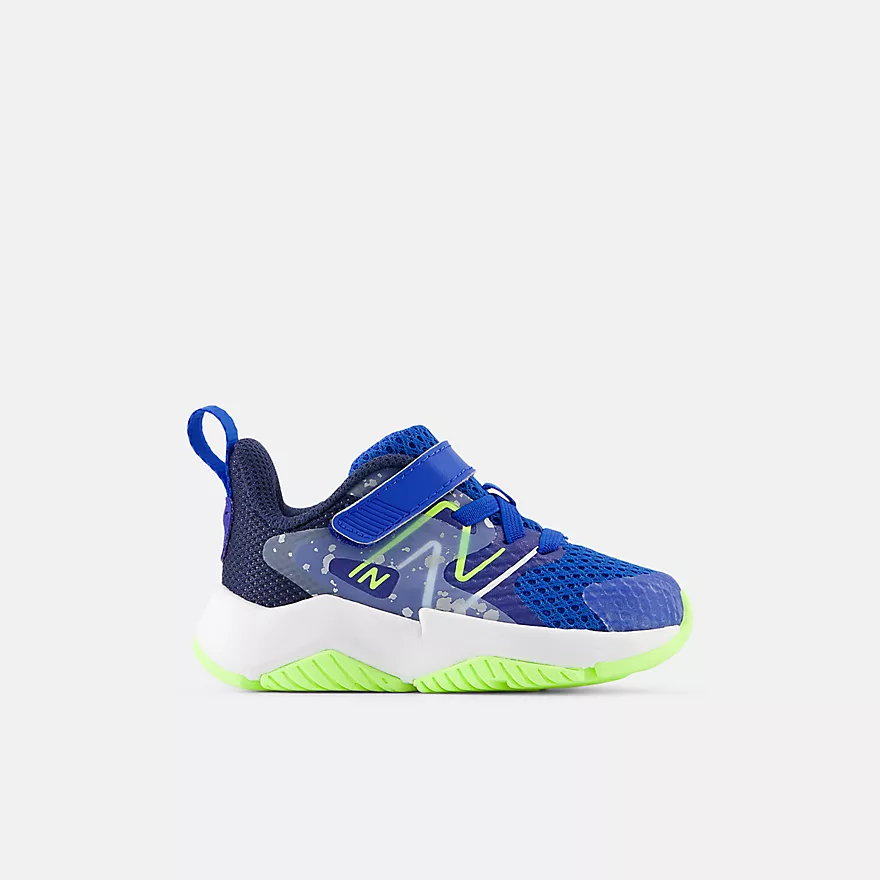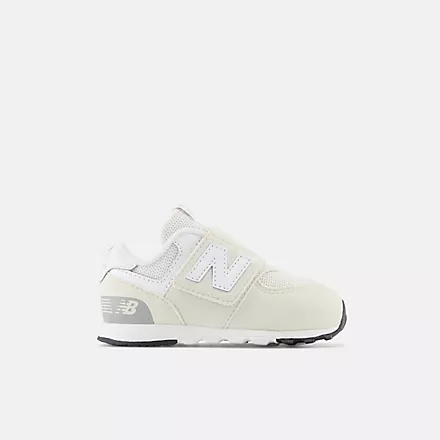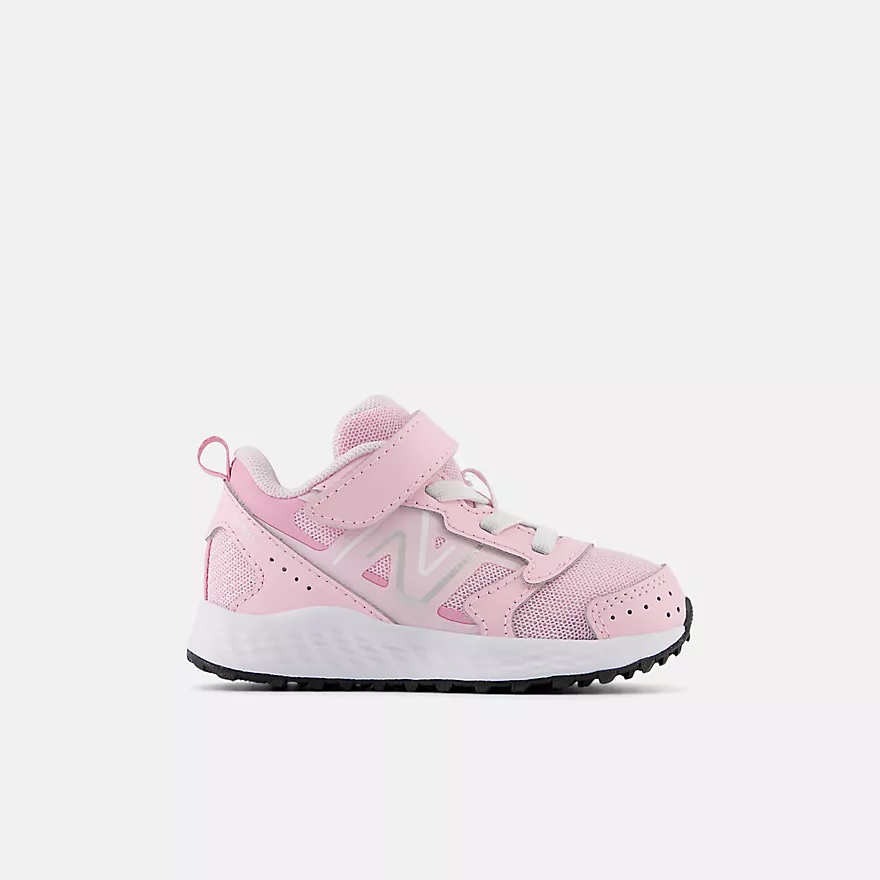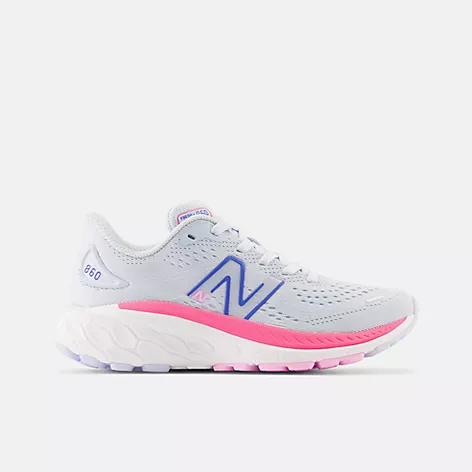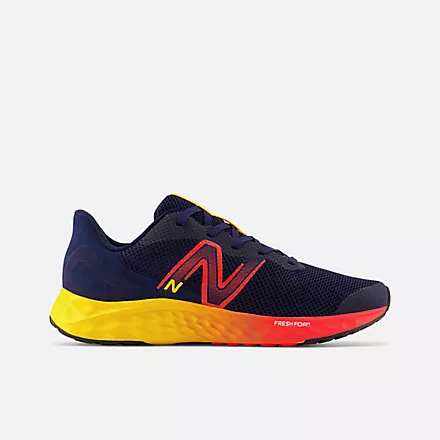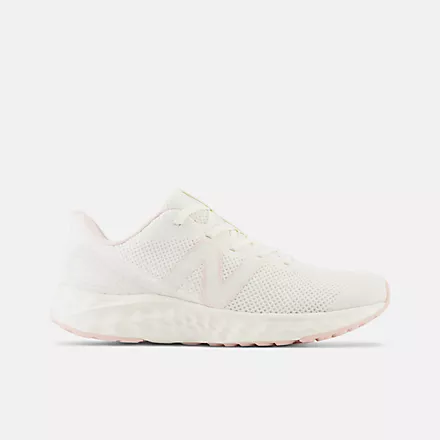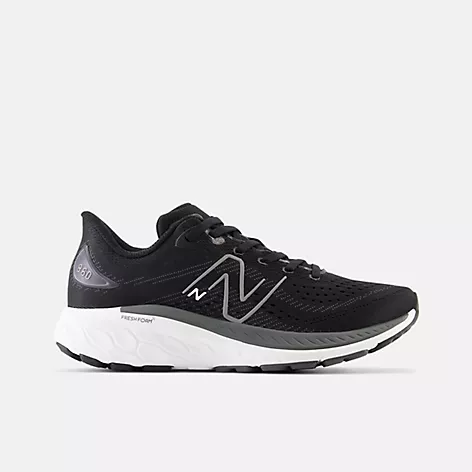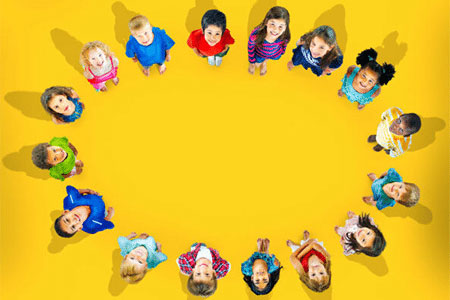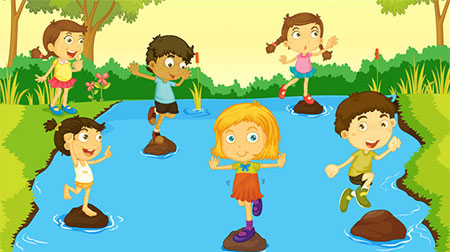What is a Normal Foot? – Learn the Most Effective Method to Keep Your Kids’ Feet Healthy!
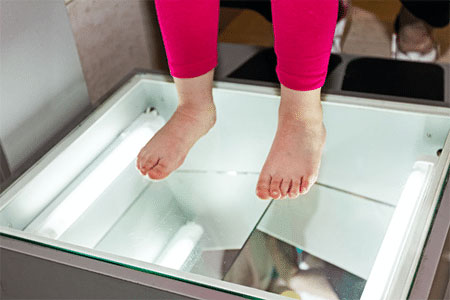
Has your child been complaining about foot and leg pain? Are you wondering whether your kids’ feet and legs are healthy? Most of my articles discuss children’s foot problems and abnormalities, but to fully understand these problems, we must first know what constitutes a normal foot.
If you are wondering whether your kids’ feet are developing correctly and if they are healthy or not, take a look at the seven criteria a normal foot should meet:
➡️ Viewed from behind, the heel should be in line with the leg.
➡️ Viewed from behind, the forefoot should be in line with the hindfoot.
➡️ Viewed from above, the forefoot should be in line with the hindfoot.
➡️ Viewed from the side the forefoot should not be lower or higher than the hindfoot, nor the foot lower or higher than the leg.
All of these criteria for a normal foot have to do with alignment. Good alignment is necessary if you want your kids’ feet to support their weight and let them walk and run and do all other kinds of activities without causing them pain. In reality, many kids’ feet don’t completely meet all the criteria for normalcy, yet a person can be symptom-free and have no walking or running restrictions because the body can compensate for mild to moderate variations in alignment.
What are the 3 most common reasons that affect alignment?
1️⃣ Having flat feet.
2️⃣ Having high arches.
3️⃣ Having rolled ankles.
What is a Normal Foot?
Let me make things easier for you and help you visualize how a healthy foot looks like:
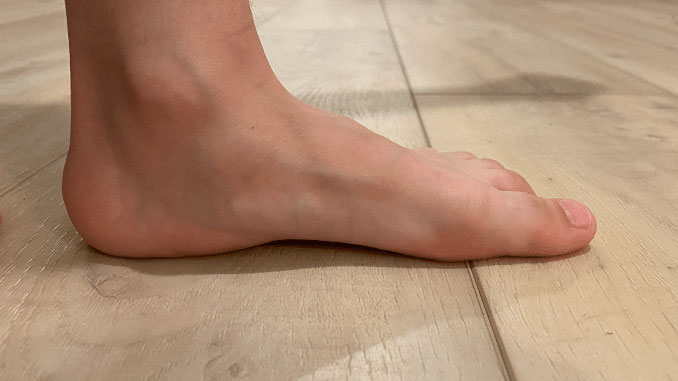
In the picture below you can see the difference between a foot with a high arch and a foot with a regular arch:
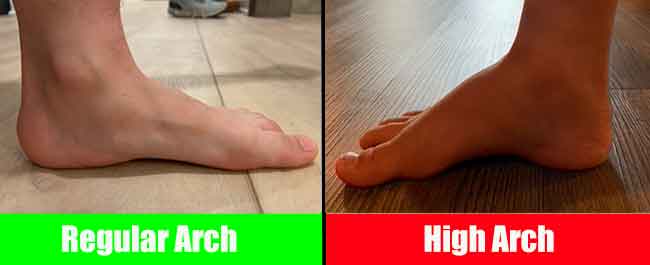
In the picture below you can see the difference between ankles that are rolling inwards and ankles that are straight:
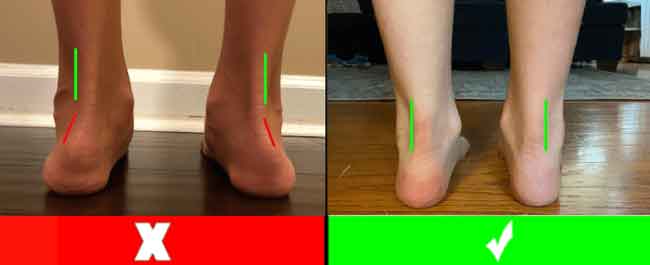
All of these 3 foot conditions will lead to the misalignment of your child’s body.
The good news is that the correct pair of shoes with a substantial outsole and a firm heel counter can improve your child’s walking gait and overall posture.
Let me show you the best type of shoes that will keep your kids’ feet and legs healthy.
How Can you Keep Your Kids’ Feet Healthy? – Learn the Secret!
It’s important to keep an eye on your child’s foot development from an early stage since the bones in your kids’ feet are made of soft cartilage that with time develops into bones–this process is known as ossification.
I always emphasize to parents that the most effective way to help their kids’ feet to develop as naturally as possible is by choosing the correct type of shoes.
I will provide you with a selection of the best children’s shoes, but before I describe them there are certain steps you can take to help your child’s feet develop naturally.
Let’s take a look at a few tips that will help your child’s feet grow, develop and strengthen as naturally as possible:
➡️ You can promote flexibility by tickling your kids’ feet and playing with their toes.
➡️ Allow your children to strengthen the muscles and tendons of their feet by letting them walk barefoot around the house. Once your child is ready to play outside provide him/her with a pair of flexible and lightweight shoes.
➡️ Provide your child with shoes that don’t constrict toe movement as children move their toes as a way of exercising their feet.
➡️ Choose breathable and seamless socks that are made out of cotton or cotton- wool since they tend to absorb moisture and keep the feet warm.
➡️ Make sure your baby’s socks are the correct size to prevent your kids’ toes from overlapping each other.
The Best Shoes for Babies
Below you can find a selection of the best shoes for a baby that is learning how to walk. These shoes can fit babies with medium (M), wide (W), or extra wide (XW) feet. Disclosure: Some links in this post may be affiliate links and we may receive a small commission (at no extra cost to you) when you click our links and make purchases.
Boys
- Shoe style SRT SM Artie by Stride Rite
- Available in medium, wide, and extra wide widths
- Rounded edges to decrease stumbles and falls
- APMA approved and built for first-time walkers
- Order this shoe a whole size larger than your baby’s current foot size
- Shoe style 2510 Racer by Tsukihoshi
- Fits medium and wide feet
- Heel stabilizer provides lateral stability
- Removable insoles
- Machine washable
- Order this shoe the same size as your baby’s foot size (shoe fits long)
- Shoe style Wes by Stride Rite
- Available in medium, wide, and extra wide widths
- Seamless construction cradle the baby’s natural shape
- Flexible, rounded, slip-resistant soles
- APMA approved
- Order this shoe a whole size larger than your baby’s current foot size
- Shoe style SM Adamby Stride Rite
- Available in medium and wide widths
- Seamless construction cradle the baby’s natural shape
- Flexible, rounded, slip-resistant soles
- Foam padding placed around the ankle collar and under the tongue for an incredibly comfortable fit and feel
- Order this shoe a whole size larger than your baby’s current foot size
- Shoe style Stevie II by See Kai Run
- Fits medium and wide feet
- Rubber outsole is flexible yet durable and provides the needed traction for first steps
- Padded heel and tongue keeps the baby’s feet comfortable
- Wide openings make on and off quick and easy
- Order this shoe half a size larger than your baby’s current foot size
- Shoe style Martin by Stride Rite
- Available in medium and wide widths
- Seamless construction cradle the baby’s natural shape
- Flexible, rounded, slip-resistant soles
- Oversized opening and pull tab on the back offer easy on and off
- Order this shoe a whole size larger than your baby’s current foot size
- Shoe style Kennedy by Stride Rite
- Available in medium, wide, and extra wide widths
- Seamless construction that cradles the foot’s natural shape
- APMA approved
- Oversized opening for easy-on
- Order this shoe half a size larger than your baby’s current foot size
- Shoe style SM Zip Runner by Stride Rite
- Available in medium and wide widths
- Oversized opening for easy on and off
- Flexible, rounded, slip-resistant soles encourage natural motion and help improve balance
- Machine washable
- Order this shoe a whole size larger than your baby’s current foot size
- Shoe style SRT Elliot by Stride Rite
- Available in medium, wide, and extra wide widths
- 100% leather made
- Sensory pods to feel the ground beneath for better traction and grip
- Lace-up closure
- Order this shoe a whole size larger than your baby’s current foot size
Girls
- Shoe style SM Adalyn by Stride Rite
- Available in medium, wide, and extra wide widths
- Oversized opening for easy on and off
- Flexible, rounded, slip-resistant soles encourage natural motion and help improve balance
- APMA approved
- Order this shoe a whole size larger than your baby’s current foot size
- Shoe style Zips Runner by Stride Rite
- Available in medium, wide, and extra wide widths
- Oversized opening for easy on and off
- Padded tongue and collar
- APMA approved
- Order this shoe a whole size larger than your baby’s current foot size
- Shoe style Susie Mary Jane by See Kai Run
- Fits medium and wide feet
- Black patent leather upper with full leather lining and insole
- Awarded the Seal of Acceptance from the American Podiatric Medical Association (APMA)
- Order this shoe half a size larger than your baby’s current foot size
- Shoe style Soft Motion Baby by Stride Rite
- Available in medium, wide, and extra wide widths
- Oversized opening for easy on and off
- Flexible, rounded, slip-resistant soles encourage natural motion and help improve balance
- APMA approved
- Order this shoe half a size larger than your baby’s current foot size
- Shoe style Stevie II by See Kai Run
- Fits medium and wide feet
- Rubber outsole is flexible yet durable and provides the needed traction for first steps
- Padded heel and tongue keeps the baby’s feet comfortable
- Wide openings make on and off quick and easy
- Order this shoe half a size larger than your baby’s current foot size
- Shoe style Thompson by Stride Rite
- Available in medium and wide widths
- Oversized opening for easy on and off
- Flexible, rounded, slip-resistant soles encourage natural motion and help improve balance
- APMA approved
- Order this shoe a whole size larger than your baby’s current foot size
- Shoe style SRT Elliot by Stride Rite
- Available in medium, wide, and extra wide widths
- 100% leather made
- Sensory pods to feel the ground beneath for better traction and grip
- Lace-up closure
- Order this shoe a whole size larger than your baby’s current foot size
- Shoe style Soft Motion Baby by Stride Rite
- Available in medium, wide, and extra wide widths
- Over-sized opening for easy on/off
- APMA approved and built for first-time walkers
- Order this shoe a whole size larger than your baby’s current foot size
- Shoe style StevieII by See Kai Run
- Fits medium and wide feet
- Rubber outsole is flexible yet durable and provides the needed traction for first steps
- Padded heel and tongue keeps the baby’s feet comfortable
- Wide openings make on and off quick and easy
- Order this shoe half a size larger than your baby’s current foot size
The Best Shoes for Toddlers
Below you can find a selection of the best shoes for toddlers who are already walking: The shoes below will fit a toddler that has narrow, medium, or wide feet–choose the width accordingly.
Boys
- Shoe style Fresh Foam 650 by New Balance
- Fits toddlers with medium, wide, or extra wide feet
- Oversized opening for easy on and off
- Fresh Foam midsole cushioning is precision engineered to deliver an ultra-cushioned, lightweight ride
- Hook and loop closure
- Order this shoe a whole size larger than your toddler’s current foot size
- Shoe style Ride 10 J by Saucony
- Available in medium, wide, and extra wide widths
- Velcro closure
- Leather and mesh upper for durability and breathability
- APMA Certified
- Traction pods on the outsole for serious grip
- EVA midsole for lightweight feel
- Order this shoe a whole size larger than your toddler’s current foot size
- Shoe style SRT Winslow by Stride Rite
- Available in medium and wide widths
- Toe cap reinforcement and bumptoe protection against stumbles
- Opens super wide which makes in and out easy
- Step-stabilizing design with comfy Ortholite memory foam footbeds
- Order this shoe half a size larger than your toddler’s current foot size
- Shoe style RaveRun by New Balance
- Available in medium, wide and extra wide widths
- Oversized opening for easy on and off
- Lightweight injection-molded EVA foam midsole provides lightweight cushioning
- Hook and loop closure
- Order this shoe a whole size larger than your toddler’s current foot size
- Shoe style Stevie II by See Kai Run
- Fits medium and wide feet (accommodates high insteps)
- Breathable textile lining and cushioned insole
- Hook and loop closure
- Padded tongue and collar for added comfort
- Order this shoe a half size larger than your toddler’s current foot size
- Shoe style 2510 Racer by Tsukihoshi
- Fits medium and wide feet (fits high insteps)
- Hook-and-loop closure
- Removable insoles
- Lightweight and flexible
- Extra wide toe box allows natural splaying of toes for better balance, comfort, and foot health
- Long heel counter provides stability
- Machine washable
- Order this shoe the same size as your toddler’s current foot size (shoe fits long)
- Shoe style Jazz Lite 2.0 by Saucony
- Available in medium and wide widths
- Leather and mesh upper for durability and breathability
- Hook-and-loop strap closure with elastic lace panel
- Anti-stink lining helps reduce odors
- Machine washable for quick and easy clean
- Order this shoe a half size larger than your toddler’s current foot size
- Shoe style 574 New-B by New Balance
- Available in medium, wide, and extra wide widths
- Velcro closure
- Generous toe box and instep to accommodate and support a first-walker’s needs
- Rubber outsole pods designed to stand up to daily wear and tear
- Extra deep
- Order this shoe a whole size larger than your toddler’s current foot size
- Shoe style 574 New-b V1 by New Balance
- Available in medium, wide, and extra wide widths
- Velcro closure
- Generous toe box and instep to accommodate and support a first-walker’s needs
- Rubber outsole pods designed to stand up to daily wear and tear
- Extra deep
- Order this shoe a whole size larger than your toddler’s current foot size
Girls
- Shoe style RaveRun by New Balance
- Fits toddlers with medium, wide, or extra wide feet
- Oversized opening for easy on and off
- Fresh Foam midsole cushioning is precision engineered to deliver an ultra-cushioned, lightweight ride
- Hook and loop closure
- Order this shoe a whole size larger than your toddler’s current foot size
- Shoe style Ride 10 J by Saucony
- Available in medium, wide, and extra wide widths
- Velcro closure
- Leather and mesh upper
- Non-marking traction pods to help improve stability
- APMA approved
- Toe cap for extra durability
- Order this shoe a whole size larger than your toddler’s current foot size
- Shoe style 2510 Racer by Tsukihoshi
- Fits medium and wide feet (fits high insteps)
- Velcro closure
- Heel stabilizer provides lateral stability
- Removable insoles
- The insoles are Infused with natural Green Tea extract (no chemicals)
- Machine washable
- Order this shoe the same size as your toddler’s current foot size (shoe fits long)
- Shoe style 574 NEW-B by New Balance
- Available in medium, wide, and extra wide widths (fits high insteps)
- Hook and loop closure system for easy on and off
- Synthetic/mesh upper
- Fresh Foam midsole cushioning is precision engineered to deliver an ultra-cushioned, lightweight ride
- Order this shoe a half size larger than your child’s current foot size
- Shoe style Stevie II by See Kai Run
- Fits medium and wide feet
- Canvas upper
- Toe cap is durable for early steps
- Double velcro straps
- Oversized opening for easy on and off
- APMA approved
- Order this shoe half a size larger than your toddler’s current foot size
- Shoe style Sr Thompson by Stride Rite
- Available in medium and wide widths
- Ortholite memory foam footbeds
- Opens super wide which makes in and out easy
- Recycled material linings to help reduce odor
- Order this shoe half a size larger than your toddler’s current foot size
- Shoe style RaveRun by New Balance
- Available in medium, wide and extra wide widths
- Oversized opening for easy on and off
- Lightweight injection-molded EVA foam midsole provides lightweight cushioning
- Hook and loop closure
- Order this shoe a whole size larger than your toddler’s current foot size
- Shoe style Kya by See Kai Run
- Fits wide and extra wide feet
- Leather and mesh upper
- Two adjustable hook-and-loop closures for easy on and off
- Padded tongue and collar for added comfort
- APMA approved
- Toe cap for extra durability
- Order this shoe a whole size larger than your toddler’s current foot size
- Shoe style 574 New-b V1 by New Balance
- Available in medium, wide, and extra wide widths
- Velcro closure
- Generous toe box and instep to accommodate and support a first-walker’s needs
- Rubber outsole pods designed to stand up to daily wear and tear
- Extra deep
- Order this shoe a whole size larger than your toddler’s current foot size
- Shoe style Fresh Foam 650 by New Balance
- Available in medium, wide and extra wide widths
- Oversized opening for easy on and off
- No-sew overlays
- Order this shoe a whole size larger than your toddler’s current foot size
The Best Shoes for Older Kids
The shoes below will fit a child with medium (M), wide (W), or extra wide (XW) feet.
Little Kid Shoe Sizes (10.5 to 3)
- Shoe style Fresh Foam X 860v13
- Available in medium and wide widths
- Lace-up closure
- Fresh Foam midsole cushioning is precision engineered to deliver an ultra-cushioned, lightweight ride
- Ultra Heel design hugs the back of the foot for a snug, supportive fit
- Order this shoe half a size larger than your child’s current foot size
- Shoe style RaveRun by New Balance
- Available in medium, wide, and extra wide widths
- Lace-up closure
- Fresh Foam midsole cushioning is precision engineered to deliver an ultra-cushioned, lightweight ride
- Ultra Heel design hugs the back of the foot for a snug, supportive fit
- Order this shoe half a size larger than your child’s current foot size
- Shoe style Axon by Saucony
- Available in medium and wide widths
- EVA midsole provides increased shock attenuation, responsive cushioning and lasting durability
- Cushioned footbed
- Order this shoe a whole size larger than your child’s current foot size
- Shoe style Axon by Saucony
- Available in medium and wide widths
- EVA midsole provides increased shock attenuation, responsive cushioning and lasting durability
- Padded tongue and collar
- Cushioned footbed
- Order this shoe a whole size larger than your child’s current foot size
- Shoe style Fresh Foam X 860 V13 by New Balance
- Available in medium and wide widths
- Lace-up closure
- Dual-layer midsole construction featuring top-bed foam cushioning and underfoot Fresh Foam X
- Order this shoe half a size larger than your child’s current foot size
- Shoe style Fresh Foam X 860 V13 by New Balance
- Available in medium and wide widths
- Lace-up closure
- Fresh Foam midsole cushioning is precision engineered to deliver an ultra-cushioned, lightweight ride
- Order this shoe half a size larger than your child’s current foot size
- Shoe style RaveRun by New Balance
- Available in medium, wide, and extra wide widths (fits high insteps)
- Lace-up closure
- Dual-layer midsole construction featuring top-bed foam cushioning and underfoot Fresh Foam X
- Order this shoe half a size larger than your child’s current foot size
- Shoe style Fresh Foam X 860v13 by New Balance
- Available in medium and wide widths
- Lace-up closure
- Strong rubber outsole and cushioned midsoles
- Order this shoe half a size larger than your child’s current foot size
- Shoe style TR14 LTT by Saucony
- Available in medium and wide widths
- Lace-up closure
- Foam padding placed around your ankle collar and under the tongue for an incredibly comfortable fit and feel
- Comfort sockliner molds to your foot with padding in the heel for ultimate cushioning at heel-strike
- Engineered mesh for structure, stretch and enhanced breathability
- Order this shoe half a size larger than your child’s current foot size
- Shoe style Cohesion TR14 LTT by Saucony
- Available in medium and wide widths
- Lace-up closure
- Foam padding placed around your ankle collar and under the tongue for an incredibly comfortable fit and feel
- Comfort sockliner molds to your foot with padding in the heel for ultimate cushioning at heel-strike
- Engineered mesh for structure, stretch and enhanced breathability
- Order this shoe half a size larger than your child’s current foot size
Big Kid Shoe Sizes (3.5 to 7)
- Shoe style Fresh Foam Arishi by New Balance
- Available in medium and wide widths
- Lace-up closure
- Fresh Foam midsole cushioning is precision engineered to deliver an ultra-cushioned, lightweight ride
- Ultra Heel design hugs the back of the foot for a snug, supportive fit
- Order this shoe half a size larger than your child’s current foot size
- Shoe style Fresh Foam Arishi v4 by New Balance
- Available in medium, wide, and extra wide widths
- Lace-up closure
- Fresh Foam midsole cushioning is precision engineered to deliver an ultra-cushioned, lightweight ride
- Ultra Heel design hugs the back of the foot for a snug, supportive fit
- Order this shoe half a size larger than your child’s current foot size
- Shoe style Kinvara by Saucony
- Available in medium and wide widths
- EVA midsole provides increased shock attenuation, responsive cushioning and lasting durability
- Padded tongue and collar
- Cushioned footbed
- Order this shoe a whole size larger than your child’s current foot size
- Shoe style Kinvara by Saucony
- Available in medium and wide widths
- Foam padding placed around your ankle collar and under the tongue for an incredibly comfortable fit and feel
- Comfort sockliner molds to your foot with padding in the heel for ultimate cushioning at heel-strike
- Engineered mesh for structure, stretch and enhanced breathability
- Order this shoe half a size larger than your child’s foot size
- Shoe style RaveRun by New Balance
- Available in medium, wide, and extra wide widths (fits high insteps)
- Lace-up closure
- Dual-layer midsole construction featuring top-bed foam cushioning and underfoot Fresh Foam X
- Order this shoe half a size larger than your child’s current foot size
- Shoe style RaveRun by New Balance
- Available in medium, wide, and extra wide widths
- Lace-up closure
- Fresh Foam midsole cushioning is precision engineered to deliver an ultra-cushioned, lightweight ride
- Ultra Heel design hugs the back of the foot for a snug, supportive fit
- Order this shoe half a size larger than your child’s current foot size
- Shoe style Fresh Foam X 880v12 by New Balance
- Available in medium and wide widths (fits high insteps)
- Lightweight EVA foam cushioning in the midsole and padded heel increases comfort
- Firm heel counter
- Supportive heel for active kids
- Breathable mesh upper
- Order this shoe a whole size larger than your child’s current foot size
- Shoe style FuelCell Propel v5 by New Balance
- Available in medium and wide widths (fits high insteps)
- Lace-up closure
- Dual-layer midsole construction featuring top-bed foam cushioning and underfoot Fresh Foam X
- Order this shoe a whole size larger than your child’s current foot size
- Shoe style Kinvara 14 by Saucony
- Available in medium and wide widths
- Lace-up closure
- Lightweight mesh upper
- Fresh Foam midsole cushioning is precision engineered to deliver an ultra-cushioned, lightweight ride
- Order this shoe half a size larger than your child’s current foot size
- Shoe style Arishi Fresh Foam by New Balance
- Available in medium, wide, and extra wide widths (fits high insteps)
- Fresh Foam midsole cushioning is precision engineered to deliver an ultra-cushioned, lightweight ride
- Lightweight mesh upper
- Order this shoe a whole size larger than your child’s current foot size
- Shoe style Axon by Saucony
- Available in medium and wide widths
- EVA midsole provides increased shock attenuation, responsive cushioning and lasting durability
- Cushioned footbed
- Order this shoe a whole size larger than your child’s current foot size
Unsure About What Shoe Size You Should Order?
In each of the descriptions of the shoes, I indicate whether you need to order a half size or a whole size bigger than your child’s foot size to provide the correct amount of growing room.
*A half a size bigger translates to 3/16 of an inch or 0.4 centimeters of space between your child’s longest toe and the end of the shoes.
*A whole size bigger translates to 3/8 of an inch or 0.8 centimeters of space between your child’s longest toe and the end of the shoes.
How to Retrieve Your Child’s Exact Foot Length and Shape
If you don’t have a local children’s shoe store where you can take your child to be properly fitted for shoes, you should take a look at an article I wrote where I describe the simplest, yet most effective method to provide your child with the correct shoe size.
In that article I help parents determine their child’s exact foot size and whether the child has narrow, medium, wide, or extra wide feet. I also will be able to tell you whether your child has a high instep or not.
Keep in mind that the size that your child measures on the shoe measuring scale is only a starting point when trying to find the correct shoe size for your child since shoes can run short, long, narrow or wide.
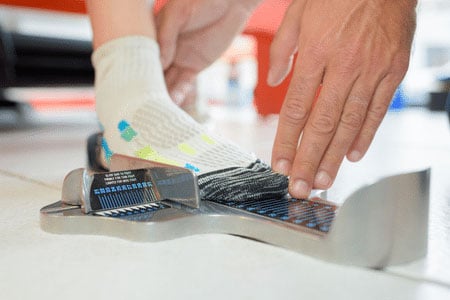
Don’t Forget About the Socks – Keep Your Kids’ Feet Healthy!
As I mentioned before, choosing breathable and seamless socks that are made out of cotton or cotton wool tends to absorb moisture and keep kids’ feet warm. Socks also act as a barrier between your kids’ feet and the shoes, preventing the formation of bacteria inside the shoes.
All feet are different, and there is no such thing as two feet alike. While it might be hard to define what a normal foot is, I provided you with a set of guidelines that will help you make sure that your child’s feet are developing correctly and it all starts by providing your child with the correct pair of shoes and socks.
Are Any Other Shoe Choices Available?
Do not hesitate to contact me directly at my e-mail if you have any further questions or if you need a different pair of shoes for your child. My e-mail address is:
Do you happen to have a children’s shoe store in your area that you trust? I get contacted by parents daily asking me if I know about a good children’s shoe store in their area. If you happen to have one, please let us know in the comments section below so we can all benefit from your experiences.






















